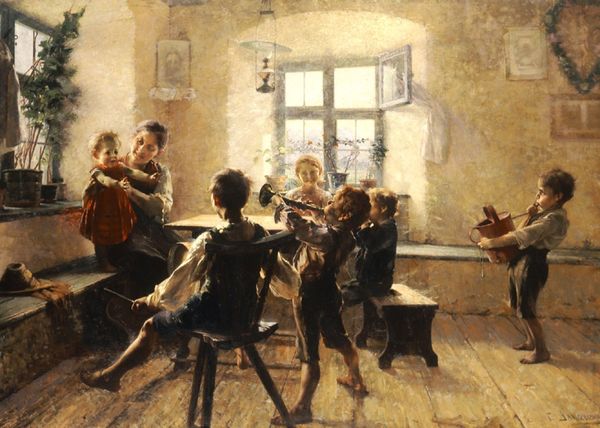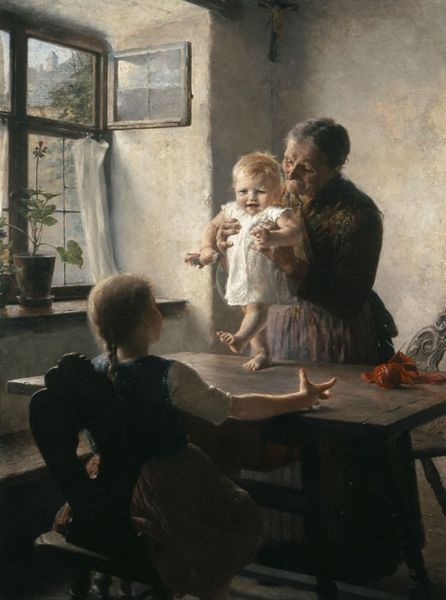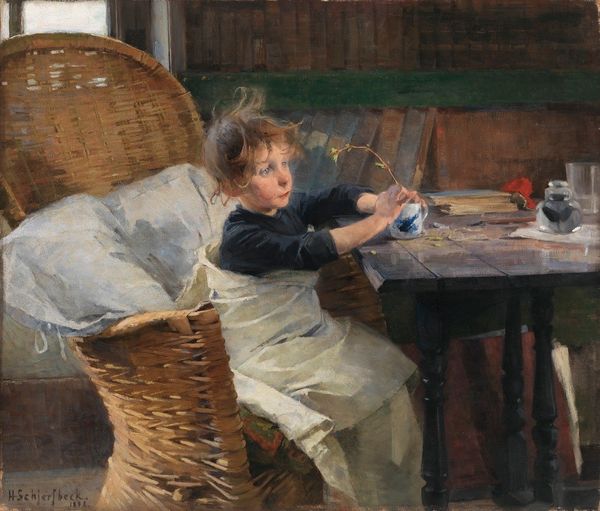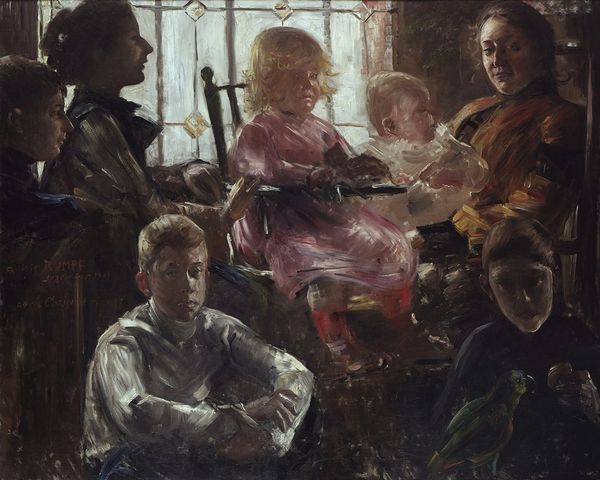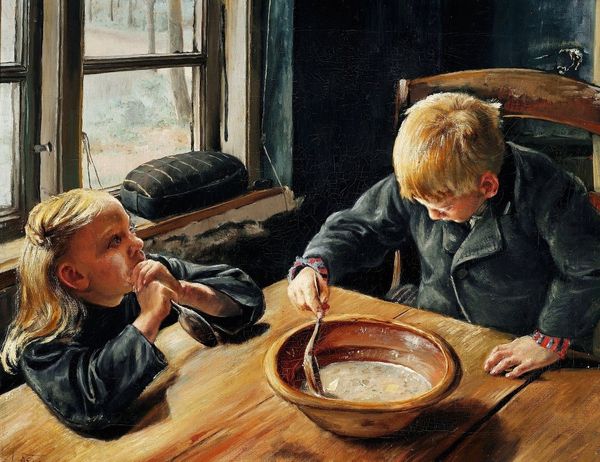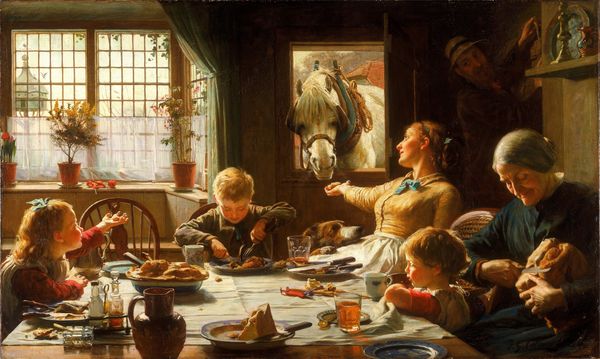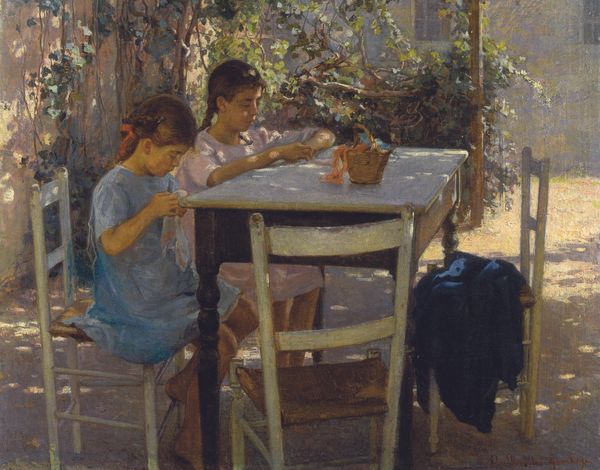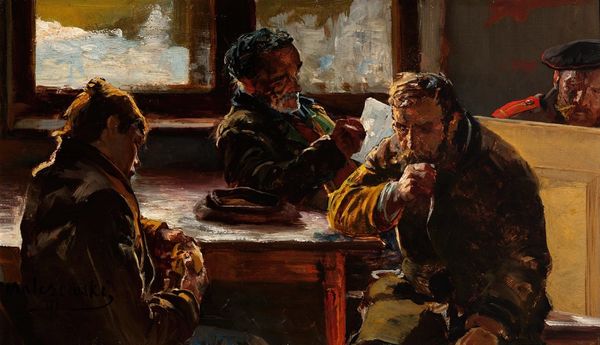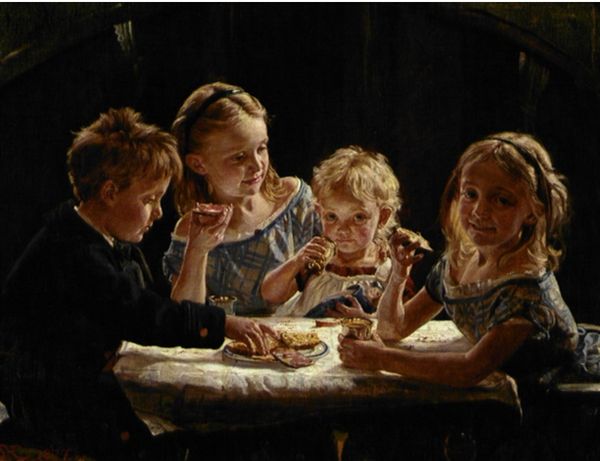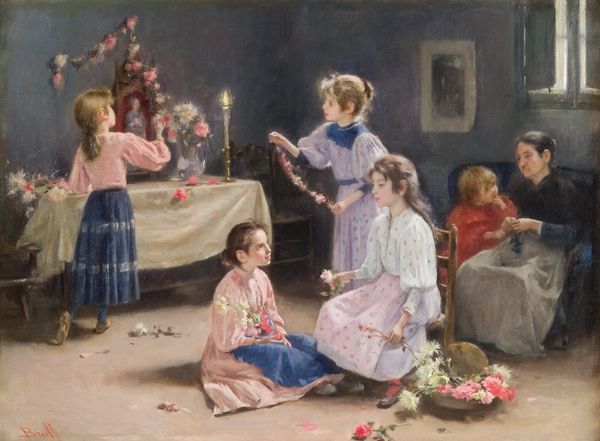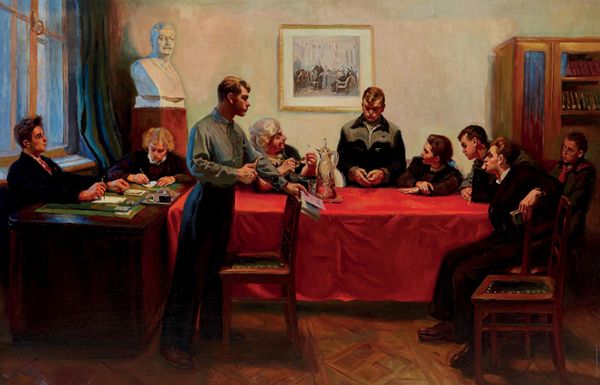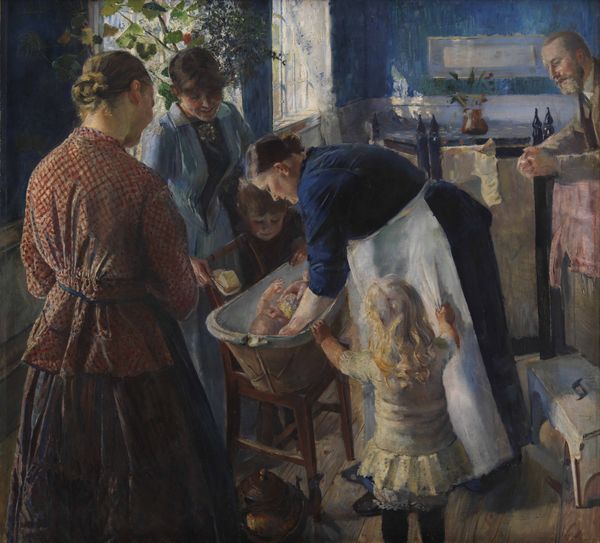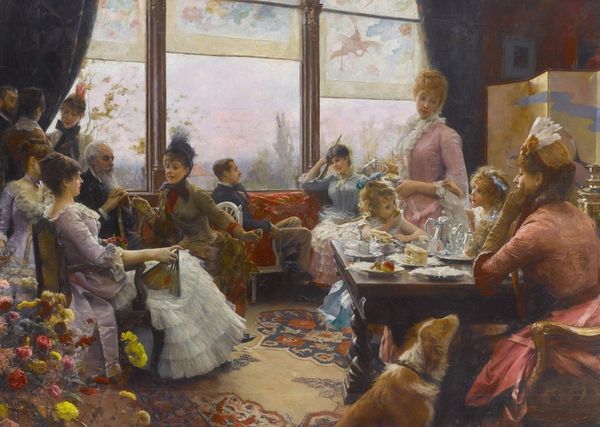
Copyright: Public domain
Curator: Upon viewing this captivating scene, my immediate thought is the sheer dynamism of childhood captured. The energy is almost palpable. Editor: Indeed. We’re looking at Georgios Jakobides' "Fragment from the 'Children's Concert'", an oil on canvas created in 1899. Jakobides was a key figure in establishing academic realism in Greece, often portraying scenes of children. Curator: He certainly had an eye for domesticity and childhood. What strikes me is the almost chaotic yet ordered arrangement—a very real depiction of a child’s world, wouldn't you agree? Editor: Absolutely. Note how he frames them against the light of the window, using the plants almost like a proscenium arch. It creates a kind of contained theatre within the domestic space, raising questions about the roles children are expected to play within the social structures of their time. Curator: A sharp point. Do you see that the implied noisiness is really compelling? The slight blurring hints at movement and activity. Yet, the muted palette – the browns and greys, makes it intimate, not jarring. It’s not a spectacle; it is simply life happening. Editor: Precisely, and by choosing such a quotidian subject, Jakobides perhaps indirectly comments on the evolving status of the family and childhood at the fin de siècle. As traditional agrarian societies transitioned towards modernity, images of childhood gained a certain idealized, sentimental value, that maybe carries more weight than first realized. Curator: Do you think there’s a subtext about societal expectations woven in here, considering its context? Editor: Potentially. In portraying these children engaged in play—albeit seemingly organized—Jakobides reflects the era’s anxieties and hopes tied to the future generation and education, where music or artistic pursuit were deemed signs of cultured upbringing. The setting itself seems significant as plants frame these figures with soft light – all signs point to care. Curator: Very well-put. Seeing it now, after this conversation, makes it seem to whisper rather than shout; subtle nuances unfold where there were only children making noise initially. Editor: That's exactly it. It is about observing how the seemingly innocent or mundane offers subtle commentaries on identity, culture and collective experience of the modern condition.
Comments
No comments
Be the first to comment and join the conversation on the ultimate creative platform.

